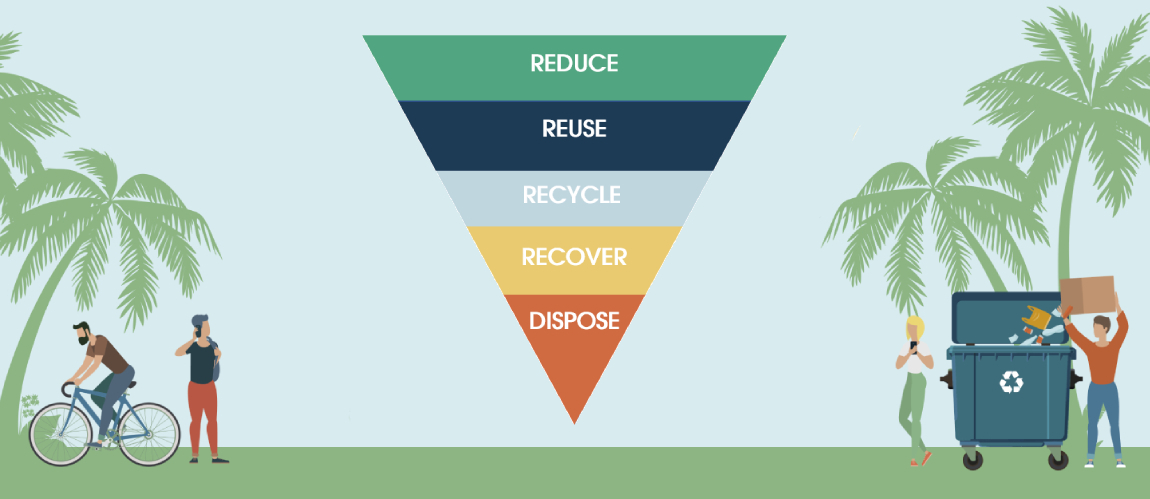
Reducing, reusing and recycling are essential waste management strategies for the planned ReGen energy recovery facility on Grand Cayman.
“With a 25-year contract and a 40-year facility lifespan, efforts to reduce, reuse and recycle waste will be important to ensuring the planned energy recovery facility continues to have capacity as the population grows,” said Richard McAree, Dart ESG programmes manager.
ReGen’s energy recovery facility is designed to process up to 115,000 tons of solid waste per year.
“The capacity of the plant is determined by the amount of heat energy it is designed to manage, which, in the case of the ReGen facility, is 35.5 MW thermal,” McAree said. “This roughly equates to the amount of heat generated by combusting 115,000 tons of municipal waste annually.”
Because the energy recovery facility’s capacity is fixed, other elements of the waste management hierarchy will be crucial to reducing overall waste generation, including diverting waste through reuse and recycling.
“The energy recovery facility is one of nine, integrated facilities designed to work together,” McAree said. “This infrastructure will serve as the foundation for everyone to do their part to rethink their consumption and waste habits. The three R’s are at the top of the waste hierarchy for a reason.”
Reduce
Residing at the top of the waste hierarchy is the principle of reduction. Because all products and services impact the environment in one way or another, reducing consumption and the resulting amount of waste produced is essential to the longevity of the ReGen facility.
On an individual level, the process of reducing begins with careful thought about how the products and services we consume impact the environment and refusing those options in favour of more sustainable alternatives. This includes minimising the use of disposable products and buying products that do not have unneccessary packaging.
Reuse
Because recycling also has an environmental impact, the waste hierarchy places reuse above recycle.
“This means reusing products for their original purpose more than once or turning them into something else that can be reused indefinitely,” McAree said.
Options include reusing plastic bags, making household cleaning rags out of old towels and sheets, and buying used goods instead of new goods.
Recycle
When it comes to diverting waste from the energy recovery facility through recycling, some materials will be more impactful than others.
“Because the energy recovery facility’s capacity is based on the amount of heat energy it can manage, reducing items that don’t combust — like glass, tin and aluminium — will not improve capacity in the same way diverting combustible items like cardboard, paper and plastics will,” McAree said. “This doesn’t undermine the importance of recycling those items, but it underscores the importance of the continual expansion of recycling and ensuring appropriate recyclables that do burn end up in the recycling bin rather than the rubbish.”
This article appears in print in the August 2021 edition of Camana Bay Times, written by Hannah Reid.
